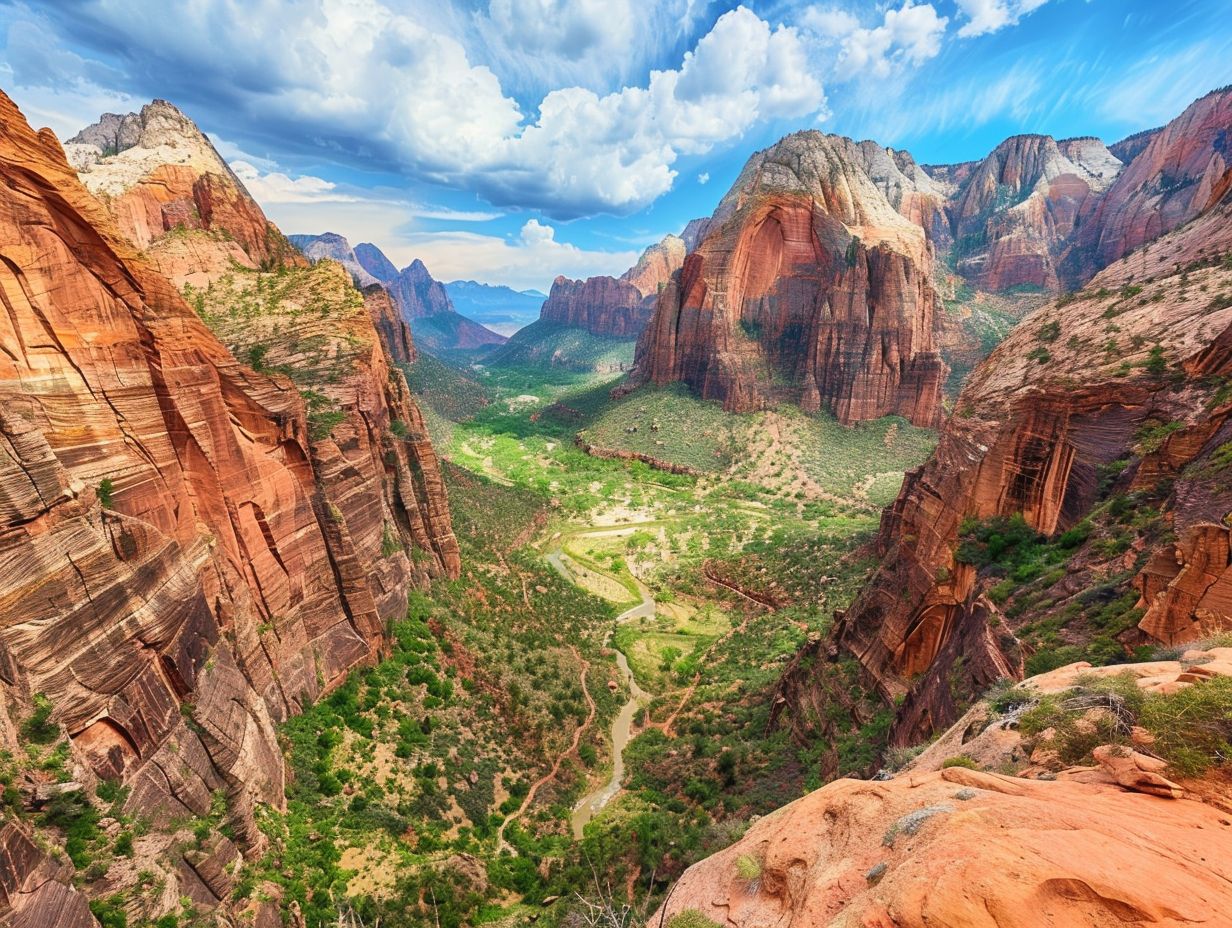Zion National Park was established on November 19, 1919, as a national park, with its history as a preserved natural environment dating back to 1909. The park is located in southwestern Utah, near the town of Springdale, and covers an area of approximately 146,597 acres (229.058 sq mi; 59,326 ha; 593.26 km2). It is governed by the National Park Service and attracted 4,623,238 visitors in 2023.
The History of Zion National Park
The park’s history includes lands originally protected by Mukuntuweap National Monument and Zion National Monument. The soaring sandstone cliffs, deep ravines, and seemingly hidden river valleys have been important to both Indigenous people and European American settlers for thousands of years. Approximately 7,000 years ago, nomadic Indian groups first frequented the Mukuntuweap/Zion region, followed by the Virgin Branch Puebloan and Fremont Indian groups. The Southern Paiute called this place Mukuntuweap, which means “straight canyon”.
The first European American settlers, Mormon pioneers, arrived in the area in the late 1800s and named the area Zion, which is ancient Hebrew for “sanctuary” or “refuge”. The natural splendor of the region so struck the surveyors that they encouraged President Taft to protect it. On July 31, 1909, Taft set aside approximately 16,000 acres for Mukuntuweap National Monument to preserve its “many natural features of unusual archaeologic, geologic, and geographic interest”. In 1918 Munkutuweap National Monument became Zion National Monument, and in 1919 the named changed again to Zion National Park.
Visiting Zion National Park

Travel to the area before it was a national park was rare due to its remote location, lack of accommodations, and the absence of real roads in southern Utah. Old wagon roads were upgraded to the first automobile roads starting about 1910, and the road into Zion Canyon was built in 1917 leading to the Grotto, short of the present road that now ends at the Temple of Sinawava. Touring cars could reach Zion Canyon by the summer of 1917. The first visitor lodging in Zion Canyon, called Wylie Camp, was established that same year as a tent camp. The Utah Parks Company, a subsidiary of the Union Pacific Railroad, acquired Wylie Camp in 1923, and offered ten-day rail/bus tours to Zion, nearby Bryce Canyon, the Kaibab Plateau, and the North Rim of the Grand Canyon. The Zion Lodge complex was built in 1925 at the site of the Wylie tent camp.
For more information on visiting Zion National Park, the official National Park Service website provides details on park hours, entrance fees, and activities available within the park.
Key Facts about Zion National Park
| Fact | Value |
|---|---|
| Established | November 19, 1919 |
| Location | Southwestern Utah, near Springdale |
| Area | 146,597 acres (229.058 sq mi; 59,326 ha; 593.26 km2) |
| Governing Body | National Park Service |
| Visitors in 2023 | 4,623,238 |
| Original Designation | Mukuntuweap National Monument (1909) |
| Name Change | Zion National Monument (1918), Zion National Park (1919) |
| First Visitor Lodging | Wylie Camp (1917) |
| Zion Lodge Complex | Built in 1925 |
References:
– https://zionnationalpark.com/history-heritage/
– https://libguides.usu.edu/nationalparkhistory
– https://www.nps.gov/zion/learn/historyculture/index.htm
– https://en.wikipedia.org/wiki/Zion_National_Park
– https://greaterzion.com/articles/history-zion-national-park/
– https://www.nps.gov/zion/index.htm

